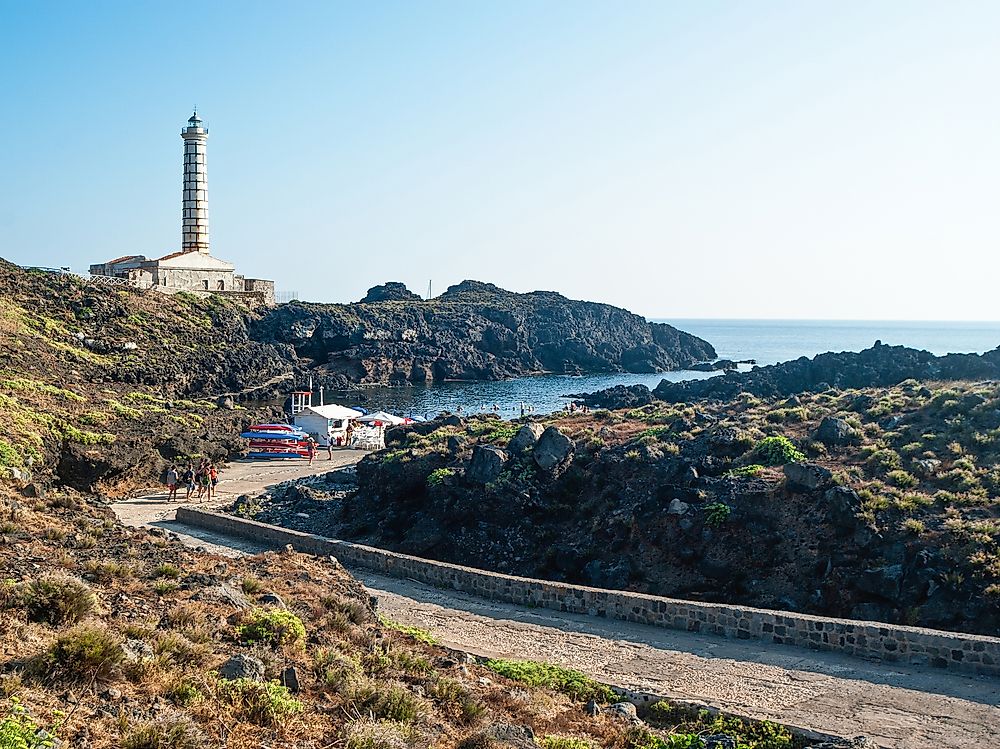10 Interesting Facts Related To The Ustica Island In The Tyrrhenian Sea

1. Ustica island is only about 6 miles across.
Ustica island is located in the Tyrrhenian Sea thirty-two miles north of Capo Gallo. It is a small island with an area of only 3.18 sqm. Ustica Island is an Italian territory and governed as part of the province of Palermo. The island is estimated to host 1,300 residents. A regular ferry service connects the island to the city of Palermo.
2. The island is the summit of a submerged volcano.
It has a black seabed made of lava stone because of its volcanic origin. Romans settlers named the island “Ustica” which is a Latin word for “burnt” because of the dark volcanic rocks. Locally, the island is referred to as the "black pearl".
3. Ustica Island is informally known as a scuba diving paradise.
The island has a diverse underwater ecosystem that can be viewed in any of the more than 30 dive sites. Divers of all levels can dive most of the sites but some including the famous Sicchitello Cave better dived by experienced divers due to their complexity. A large number of caves are located on the seaward cliffs of the island such as the Grotta dell’Orro, Grotta Azzurra, and the Grotta Verde.
4. Ustica's coastline is a marine reserve.
The Italian government protects the island from environmental degradation and modern development that would otherwise result in the loss of natural habitat and increased pollution. The island’s coastline is protected as a marine reserve ensuring that the famous beaches remain clear for divers and swimmers.
5. The island has been inhabited since ancient times.
Archeological findings in the island show that it was inhabited since ancient times. Archeologists found traces of humans that were traced back to the 2nd millennium BCE, and the settlement of Romans and Phoenicians. In 1989, Excavations done at Faraglioni unearthed historical villages dating back to the 14th and 13th centuries BCE. About 300 stone built houses and a defensive perimeter wall was discovered. Archeologists have linked the early settlers to the Aeolian Islands.
6. Bartholomew the Apostle is the patron saint of Ustica Island.
Bartholomew the Apostle was the patron saint of the island of Lipari. When a settlement from the nearby island came to Ustica in the mid-18th century, Bartholomew the Apostle became the patron saint of Ustica as well.
7. Ustica Island was used as a prison.
Italian prime minister Benito Mussolini used the island as a prison for his political opponents and those who were banished from the society. At times Mussolini would imprison over 1,500 at a time, many of whom were accused of homosexuality. Italian philosophers and politicians Amadeo Bordiga and Antonio Gramsci are among thousands of people who were imprisoned in the island. In the 1940s war, prisoners from Yugoslavia were crammed in the prisons at the island. Hundreds died of malnutrition, diseases, and inhumane living conditions. Tuberculosis affected thousands of prisoners due to lack of isolation facilities.
8. One of the best things to do on the island apart from diving is to walk along the coast.
The footpaths along the coast are well maintained unlike in several other coastlines in Italy. In spring, plants around the island come to life as flowers blossom. One of the most traversed paths starts from Torre Santa Maria to the watchtower on the southern end of the town. The track was used by mules during the ancient period and contours through agricultural land and woodland. Tourists can visit old windmills and rest on benches overlooking the sea. Birds, butterflies, the seas, vegetation, and the terrain offers tourists a rare life experience of the island.
9. The island is reachable only by ferry.
There is no airport on the island, so one has to fly to Palermo Airport in Sicily, then catch a bus to the Port of Palermo. From the port, the Island is accessible by either a hydrofoil or a ferry. The ferry is slower but more scenic compared to the hydrofoil which is faster and less scenic. From the port, pedestrians use the flights of steps to reach the main village while passengers and motorists take a winding road to the center of the town. A chain of piazzas slope from the town to the harbor road, the piazza house bars, restaurants, lounging facilities, and several other businesses. Colorful murals decorate a majority of houses within the town.
10. There is a large population with Ustica ancestry in New Orleans.
Because of the limited resources of the small island, many people have chosen to leave and settle elsewhere. In the mid-19th century, many residents of Ustica resettled in New Orleans in the US, in the late 19th century in San Fransico, and in the 20th century in North Africa.











